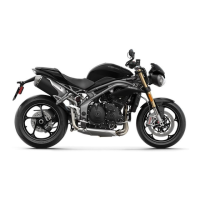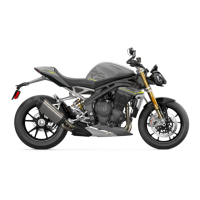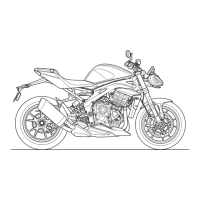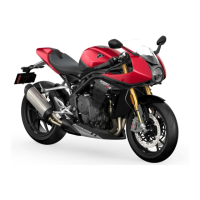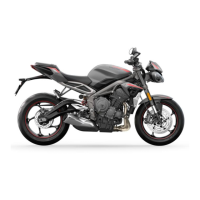117
Maintenance and Adjustment
Should the battery Voltage fall below
12.7 Volts, the battery should be charged
using a Triumph approved battery charger.
Always follow the instructions supplied with
the battery charger.
For extended periods of storage (beyond two
weeks) the battery should be removed from
the motorcycle and kept charged using a
Triumph approved maintenance charger.
Similarly, should the battery charge fall to a
level where it will not start the motorcycle,
remove the battery from the motorcycle
before charging.
Battery Installation
Place the battery in the battery case.
Reconnect the battery, positive (red) lead first.
Apply a light coat of grease to the terminals
to prevent corrosion.
Cover the positive terminal with the
protective cap.
Install the battery strap.
Lower and secure the fuel tank (see
page 89).
Fuse Boxes
1. Front fuse box
2. Rear fuse box
The two fuse boxes are located beneath the
seat.
Fuse Identification
A blown fuse is indicated when all of the
systems protected by that fuse become
inoperative. When checking for a blown fuse,
use the tables to establish which fuse has
blown.
Ensure that the battery terminals do not
touch the motorcycle frame as this may
cause a short circuit or spark, which would
ignite battery gases causing a risk of
personal injury.
Always replace blown fuses with new ones
of the correct rating (as specified on the
fuse box cover) and never use a fuse of
higher rating. Use of an incorrect fuse
could lead to an electrical problem,
resulting in motorcycle damage, loss of
motorcycle control and an accident.
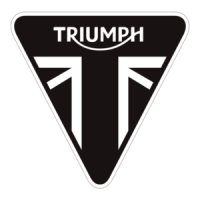
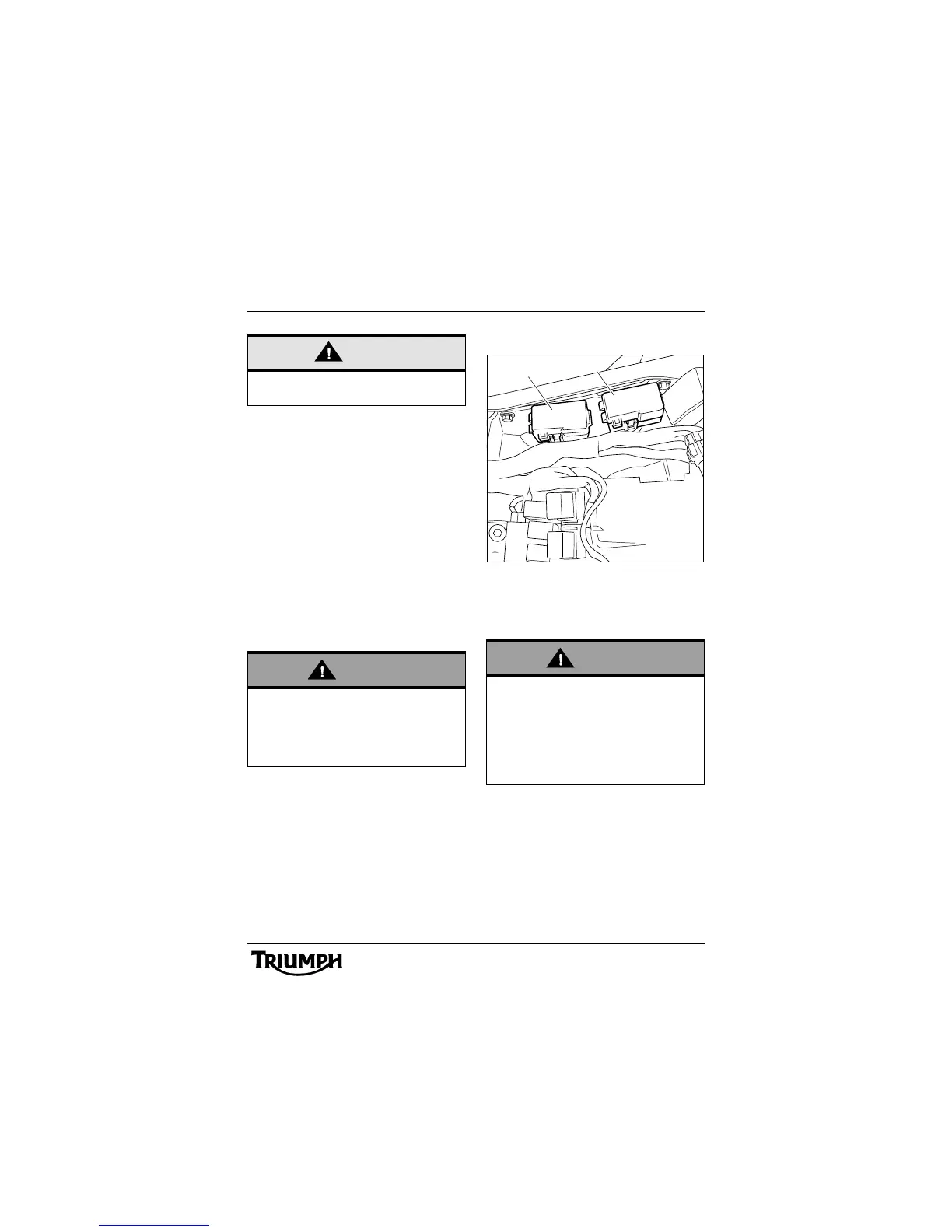